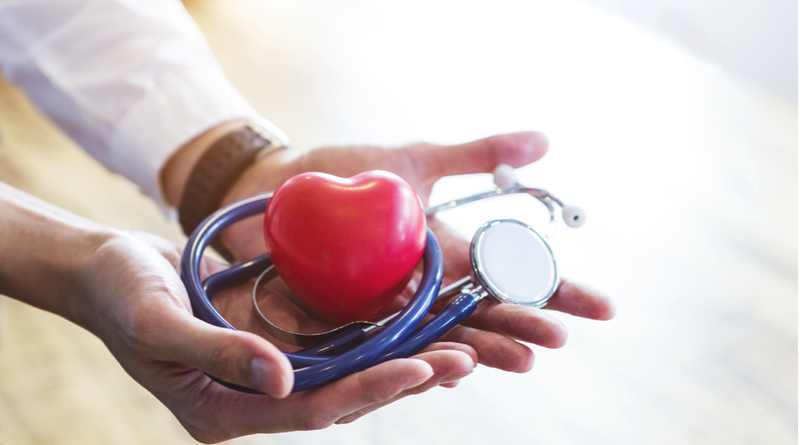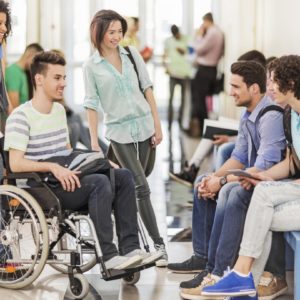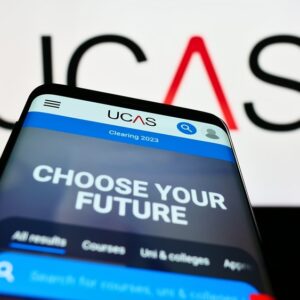What is Cardiac Rehabilitation?
Cardiac Rehabilitation is a customised outpatient program of exercise and education. The program is designed to help you improve your health and recover from a heart attack or other forms of heart disease or surgery to treat heart disease.
It is a supervised program that includes education about healthy living, including how to eat healthily, take medicine as prescribed, and quit smoking and counselling to find ways to relieve stress and improve mental health.
What 3rd level courses are available?
Universities and colleges in Ireland are offering courses in Cardiac Rehabilitation and other related subjects in the following subject areas:
- Understanding Cardiovascular Diseases – Gain an overview of heart and circulatory diseases, the anatomy and physiology of the cardiovascular system, risk factors and patterns and methods of prevention worldwide.
- Cardiovascular Disease in Primary Care – This module aims to develop the knowledge and skills of health care professionals in the management of Cardiovascular Disease.
- Health Promotion: Cardiovascular (PG Cert) – This course aims to provide candidates with professional education and training in the principles and practice of health promotion as applied to the promotion of cardiovascular health and diabetes prevention.
- Cardiac First Responder Instructor – This course will provide learners with the knowledge, skills and attitude to train others to be PHECC registered cardiac first responders.
- AED Defibrillator Training/Cardiac First Response PHECC – Using an AED defibrillator is one of the vital links in the chain of survival. Ideally, wherever there is an occupational first aider in a workplace the provision of an AED should be considered.
- MSc in Nursing in Applied Cardiac Catheterisation laboratory practice – For many nurses working in the Cardiac Catheterisation Laboratory, this will be an upskilling programme, providing contextual skills and competencies to build, promote and manage their patient cohort.
Studying Cardiac Rehabilitation in college
There are many courses in Cardiac Rehabilitation that may take place over a few days, weeks or even 1 year to 4 years depending on the course and modules selected. There are also part-time courses and night courses available so you can be sure to fit in your studies no matter what your schedule is like.
Courses will cover theory work through lectures, assignments, tutorials and taught modules. Assessments will take place on a continuous basis with written examinations and practical assignments combined in order to achieve a qualification.
You could also consider work experience or a work shadow in the industry. You may find it useful to work shadow a clinical scientist working in cardiac sciences to gain a more thorough understanding of the job role. Contact the cardiac department at your local hospital to try to arrange a visit.
Alternatively, you could consider some general volunteering, for example on a hospital ward, to give you an insight into what it’s like to work in a hospital setting and to show your commitment. You could also work as a healthcare assistant or do some paid or voluntary work in a care setting, for example in a care home or hospice.
Work Experience will not only give you the opportunity to obtain a deeper knowledge and understanding of the industry, it will also give you a chance to do some essential networking with other industry professionals and gain valuable contacts for the future.
Career options
After completing a Cardiac Rehabilitation course you will be able to get started in a career that uses specific knowledge of cardiac science and biology and a variety of technical and medical diagnostic procedures to assess patients’ cardiac function.
As a clinical scientist working in cardiac science, you’ll have direct contact with patients of all ages who have known or suspected heart disease. You’ll carry out complex diagnostic, monitoring and analytical tests and will also be involved in interventional procedures such as pacemaker implantation.
The main employer of clinical scientists working in cardiac sciences is cardiology departments. Trainees are usually employed by teaching hospitals. You’ll work as part of a multidisciplinary healthcare team including anaesthetists, cardiologists, healthcare science practitioners, nurses, operating department practitioners, radiographers and surgeons.
Opportunities also exist with private healthcare providers, organisations that provide cardiac screening services and universities, for example in a research or teaching role. If you decide to progress into academic or research roles within a university setting, you’ll need to get your research published in a relevant journal and present it at conferences.
There are opportunities to move into clinical research or to get involved in training and registration assessments. You can also develop your career by getting involved with professional bodies, taking on external professional roles or moving into a consultancy role. It’s also possible to move into industry as a clinical applications specialist, working on behalf of a company that sells cardiac diagnostic equipment, for example.
Working hours will depend on whether you are self-employed, employed by a facility with set business hours or if you are contracted to various businesses or companies. You will usually work a 37.5 hour week, which may include shift/on-call work.
Related jobs include:
- Exercise physiologist
- Personal Trainer
- Physiotherapist
- Dietician
- Cardiologist
- Biomedical scientist
- Clinical research associate
- Pharmacologist
- Research scientist (medical)
- Clinical scientist, cardiac sciences
- Medical sales representative
- Science writer
- Secondary school teacher
- Therapeutic radiographer
Further study
After completing a course in Cardiac Rehabilitation you may choose to pursue further study in a specialist field to increase your knowledge base and skill set. Postgraduate study can also be used as a means to change career focus or to gain professional qualifications required to practise in certain career areas such as Physiotherapy, Therapy or Personal Training.
FAQ
What conditions can benefit from Cardiac Rehabilitation?
Cardiac rehabilitation is an option for people with many forms of heart disease. In particular, you might benefit from cardiac rehabilitation if your medical history includes:
- Heart attack
- Coronary artery disease
- Heart failure
- Peripheral artery disease
- Chest pain (angina)
- Cardiomyopathy
- Certain congenital heart diseases
- Coronary artery bypass surgery
- Angioplasty and stents
- Heart or lung transplant
- Heart valve repair or replacement
- Pulmonary hypertension
What does Cardiac Rehabilitation typically include?
Medical evaluation – A health care team will generally perform an initial evaluation to check physical abilities, medical limitations and any other conditions.
Physical activity – Cardiac rehabilitation can improve cardiovascular fitness through physical activity. A health care team will likely suggest low impact activities that have a lower risk of injuries, such as walking, cycling, rowing, jogging and yoga.
Lifestyle education – This involves support and education on making healthy lifestyle changes, such as eating a heart-healthy diet, exercising regularly, maintaining a healthy weight and quitting smoking.
It can include guidance about managing conditions such as high blood pressure, diabetes, high cholesterol and obesity.
Support – Adjusting to a serious health problem often takes time and it is important to have support.
Counselling can help with learning healthy ways to cope with depression and other feelings. Vocational or occupational therapy can teach skills to help you return to work.
Where can I study Cardiac Rehabilitation?
Explore your options here
Did You Know?
- The average heart is the size of a fist in an adult and weighs less than 1 pound. However, a man’s heart, on average, is 2 ounces heavier than a woman’s heart.
- The first implantable pacemaker was used in 1958. Arne Larsson, who received the pacemaker, lived longer than the surgeon who implanted it. Larsson died at 86 of a disease that was unrelated to his heart.
- The beating sound of your heart is caused by the valves of the heart opening and closing.
- Your heart pumps about 1.5 gallons of blood every minute. Over the course of a day, that adds up to over 2,000 gallons.
- The right side of your heart pumps blood into your lungs. The left side of your heart pumps blood back through your body.












Comments